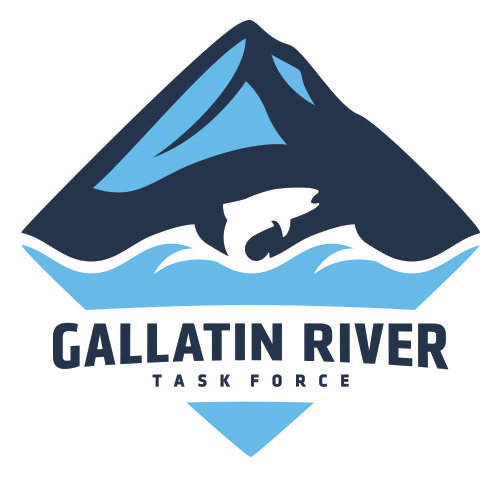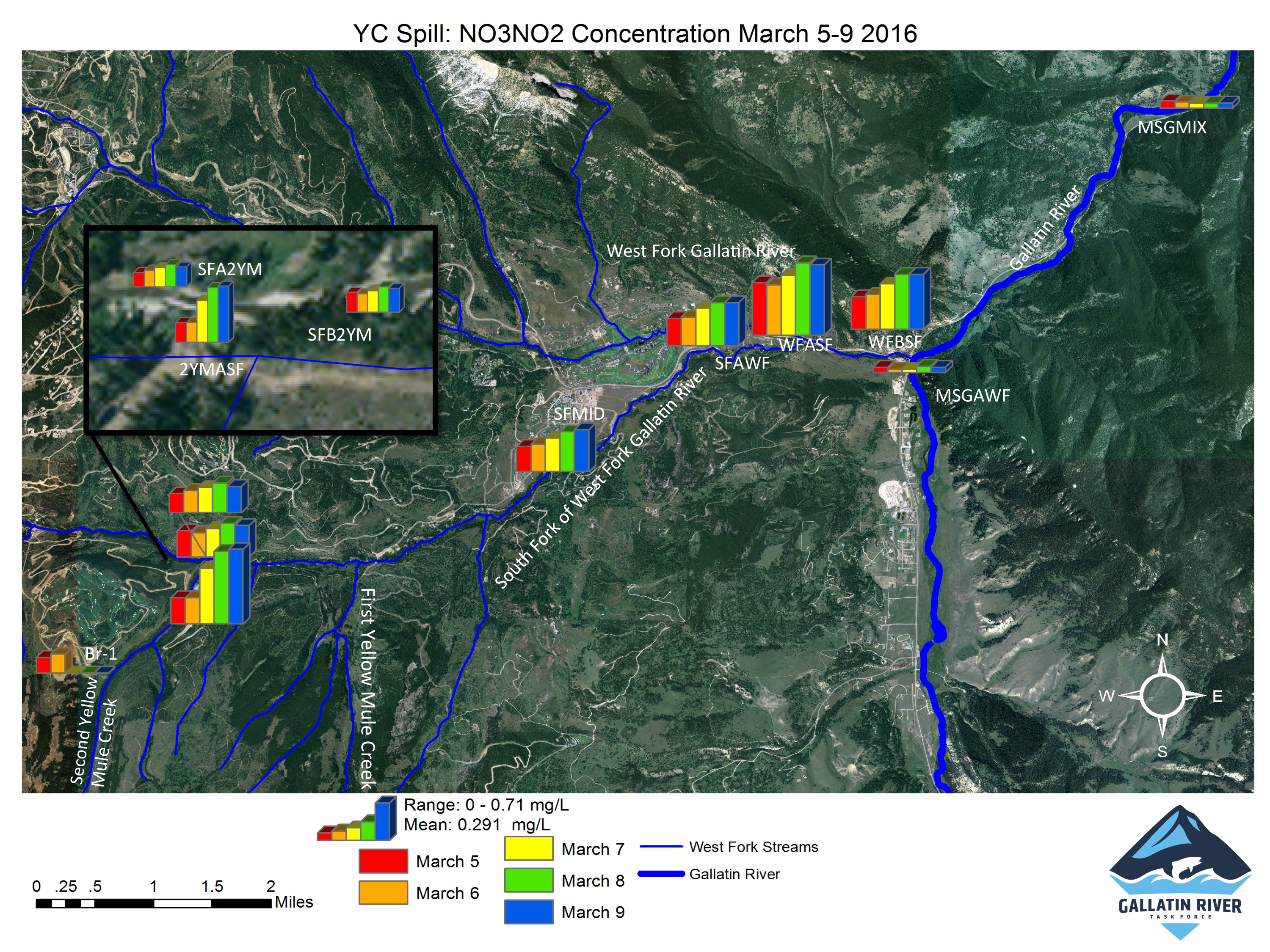The Gallatin River Task Force completed a report for the first phase of monitoring after Yellowstone Club wastewater effluent spill. Data results indicate that Montana health standards were not exceeded at any of the sampling sites during the monitoring period. Aquatic life standards were exceeded for ammonia and sediment.
Early in the morning of March 3rd, 2016, a mechanical failure of the wastewater effluent storage pond at the Yellowstone Club in Big Sky, MT caused a leak and spilled tertiary treated wastewater into the Second Yellow Mule drainage. Second Yellow Mule is a small headwater tributary of the South Fork of the West Fork of the Gallatin River.
Treated wastewater effluent from the spill cut through the hillside, where the storage pond is located, and carried sediment to Second Yellow Mule creek. Approximately 30 million gallons of wastewater spilled into Second Yellow Mule over four days until the pond stopped leaking on March 7th at 4 am.
The Gallatin River Task Force and Confluence Consulting Inc. began monitoring the impacts of the spill on March 4th and continued monitoring daily while the pond was actively leaking and impacting downstream surface waters. The Phase 1 report assesses the data collected during first phase of the monitoring project from March 3rd until March 9th, when field measurements indicated that water quality concentrations resembled concentrations prior to the spill.
- Sample sites from the Yellowstone Club Spill
- Ammonia
- Turbidity
- TSS
- Nitrogen
- NO3 + NO2
The ammonia standard was exceeded at the most upstream sites on Second Yellow Mule (2YMASF) on March 5th and March 6th and on the South Fork, just below the confluence with Second Yellow Mule on March 5th.
The turbidity standard was exceeded for all affected sites throughout Phase 1 except for the Lower Gallatin site (MSGMIX), where it was exceeded on March 5th and March 6th and the Upper South Fork site (SFB2YM), where the standard was exceeded March 5th through March 7th. Fish surveys conducted on March 10th documented five fish mortalities.
The full extent of the aquatic life impacts will depend on how spring runoff and storm events redistribute fine sediment throughout the drainage over the upcoming months and successive years. Due to the potential cascading impacts caused by fine sediment to fish aquatic insect habitat, it may take years to fully characterize the long-term effects of the spill.
Read the full report here.







